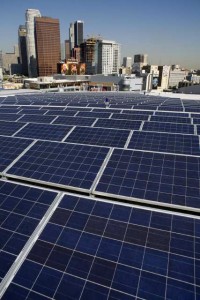For a little while there, circa 2009, there was a debate about how best to compensate rooftop and other small-scale solar PV owners. Some people wanted the German-style “feed-in tariff” — an awkward term that basically means solar owners receive cash payment for the energy they generate, equivalent to wholesale power rates. This program resulted in a huge burst of solar deployment in countries like Germany, Spain and Italy. On the other side, advocates wanted “net metering,” in which solar owners receive retail credit for the energy they produce off their electricity bills, but no cash. So the more you use on-site, the more retail credit you can get (there’s typically no cash for surplus energy you generate).
Net metering folks won in California and other places, and the program is in place in many states all around the country. It’s helped spur significant deployment. But the system isn’t ideal. As mentioned, if you own a warehouse or other big facility with little on-site usage, you don’t have a strong incentive to purchase or lease solar, because you don’t have much usage to offset with credits. And utilities don’t like it because some customers “net-out” to zero charges over a year, even though they still use nighttime or wintertime-daytime energy. But they pay nothing.
LA residents have access to both programs, now that Los Angeles Department of Water and Power (LADWP) has begun a feed-in tariff program that is stimulating solar deployment all over the city, including the brownfields and industrial sites that net metering had trouble addressing. But in a recent report from LADWP staff, the utility recommends expanding the feed-in tariff program over net metering, due to the aforementioned concerns and limitations. KCET has the run-down here.
The advantages are big: feed-in tariff customers will still pay for the utility infrastructure and energy they use, but they will receive much simpler cash payments for what they have on-site. And property owners with low-usage buildings and facilities will still be motivated to go solar. If the rates are structured properly, it could lead to a huge, cost-effective boom for solar in LA and avoid much of the utility complaining. Ultimately, if successful, LA could show on a large scale how to do solar incentives right, giving California and other states a path to follow.



